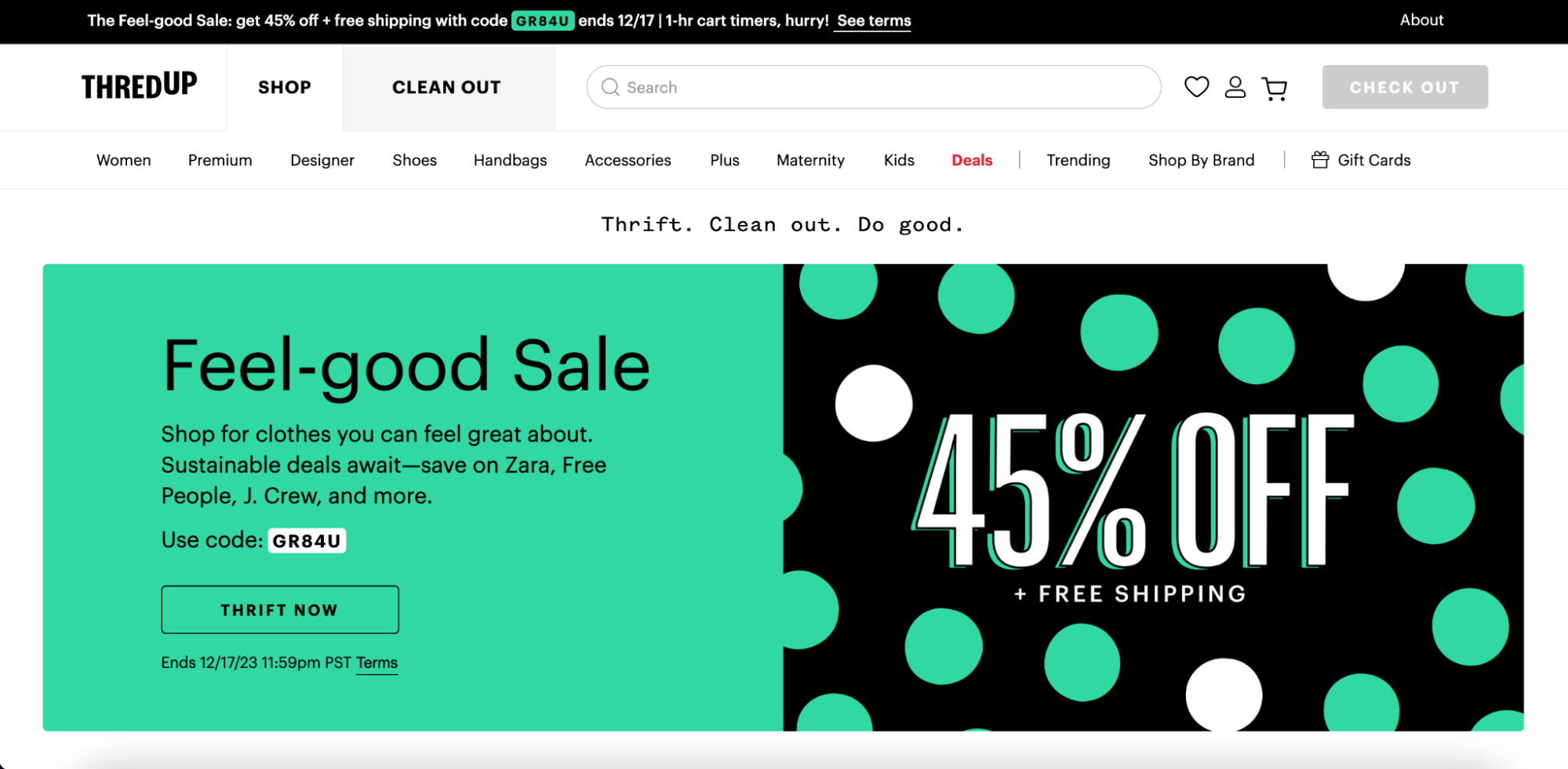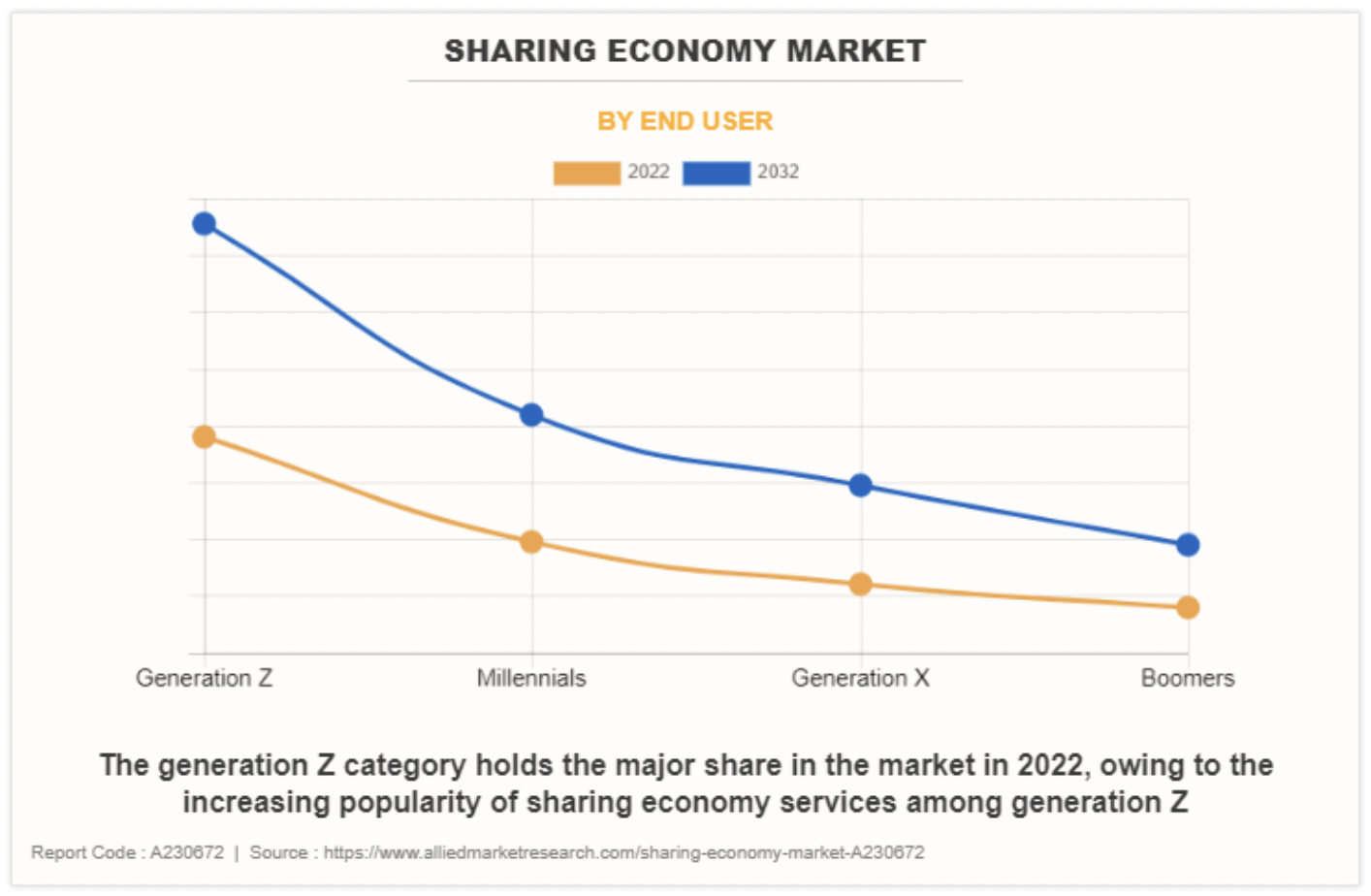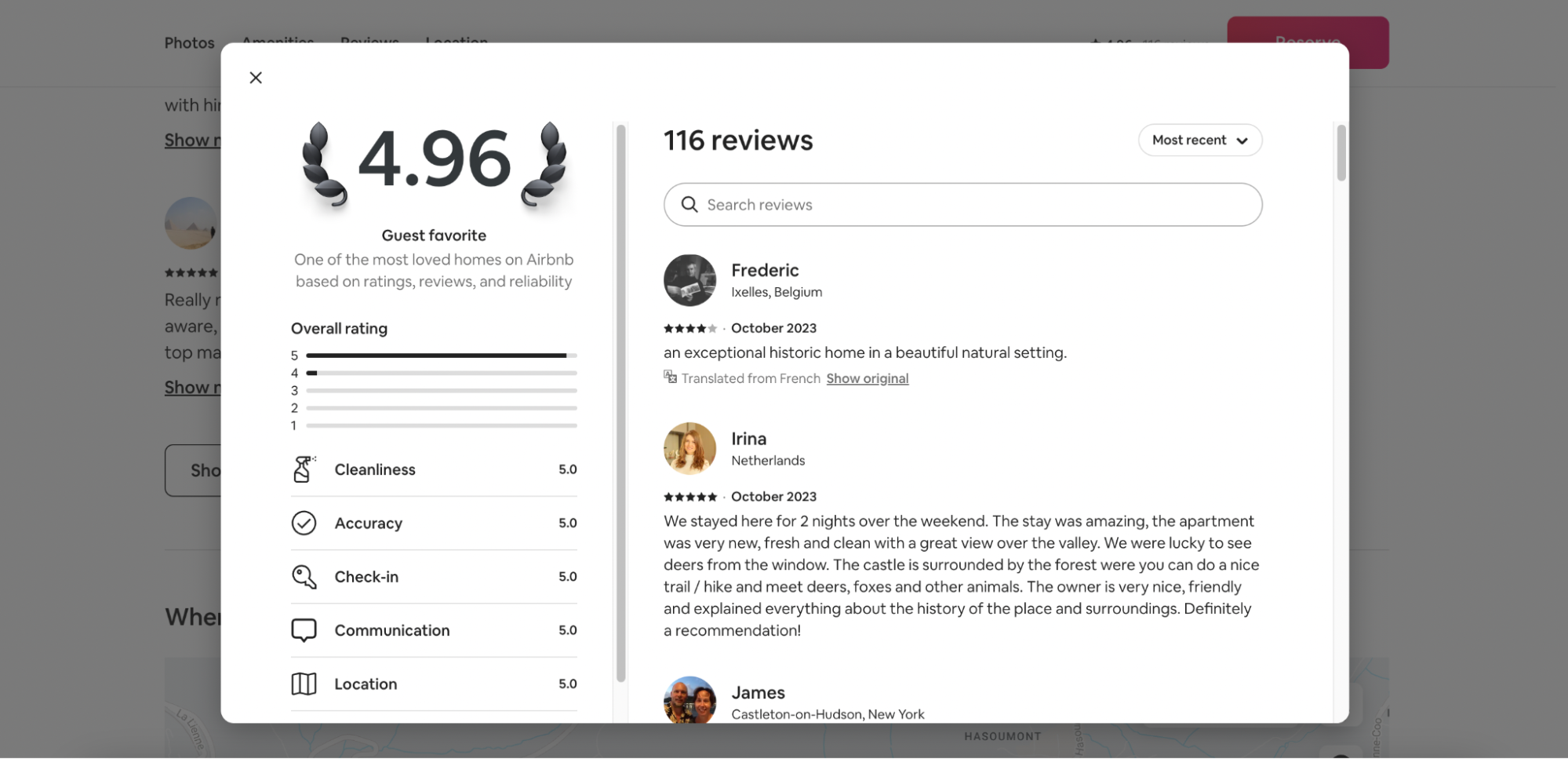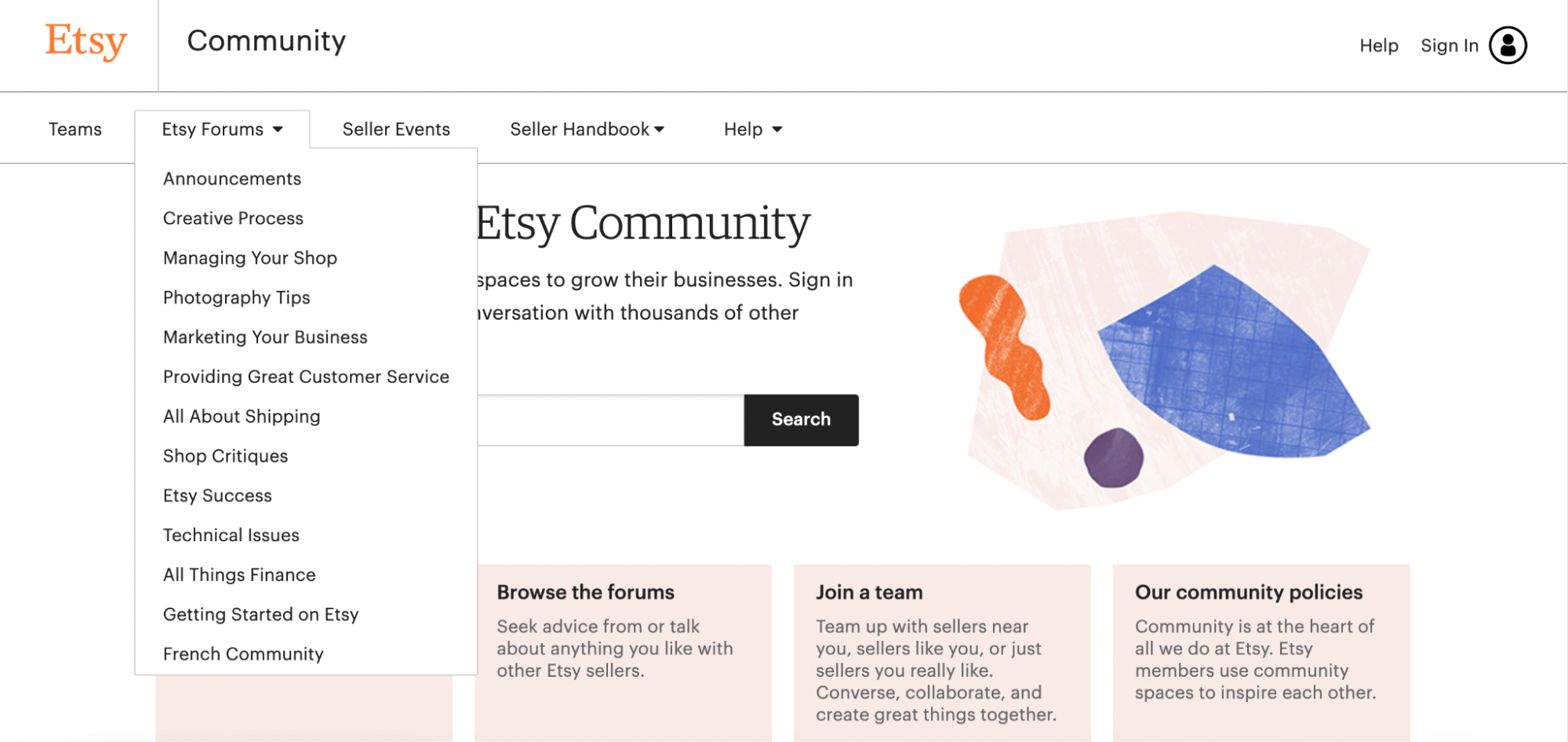
Table of Contents
- Introduction
- What’s a Peer to Peer Marketplace: The Impact and Evolution of Peer-to-Peer Marketplaces
- P2P vs. C2C Marketplaces: Understanding the Difference
- Types of Peer-to-Peer Marketplaces
- Inspiring Examples of Niche P2P Marketplaces
- Why Do Entrepreneurs Start P2P Marketplaces?
- Benefits and Challenges of Peer-to-Peer Marketplaces
- What Features Should P2P Marketplace Software Have?
- 6 Steps to Build a Successful P2P Marketplace
- Code from Scratch or Use Off-the-Shelf Marketplace Solution?
Introduction
Peer-to-Peer (P2P) marketplaces are reshaping the landscape of online commerce. The numbers speak volumes—the P2P marketplace market is set to soar to an impressive US$ 5.1 Billion by 2032, with a robust growth rate of 15.5% annually between 2022 and 2032. To put it in perspective, this market raked in a substantial US$ 1,078.0 Million in revenue in 2021. These statistics highlight the substantial and rapid growth of peer-to-peer marketplaces, signaling their importance in the evolving world of online transactions.
As we navigate through the ins and outs of peer-to-peer marketplaces, it's clear that they aren't just a passing trend—they're a force to be reckoned with, shaping how people buy and sell goods and services directly. Let's explore the basics of what makes a peer-to-peer marketplace tick and its diverse applications in connecting people for transactions.
What’s a Peer to Peer Marketplace: The Impact and Evolution of Peer-to-Peer Marketplaces
The Peer-to-Peer (P2P) marketplace has redefined the way individuals engage in commercial transactions. These platforms leverage technology to directly connect suppliers and consumers, enabling them to buy, sell, or rent products and services without the need for a traditional intermediary. The historical evolution of P2P marketplaces, dating back to the 1990s, has significantly disrupted traditional business models, leading to the emergence of a thriving and dynamic online ecosystem.
Pierre Omidyar's experience with eBay in 1995 exemplifies the early success of P2P marketplaces, as he sold a broken laser pointer for $15, sparking the growth of one of the largest P2P platforms. Today, the market is teeming with diverse P2P marketplaces that cater to various consumer needs, with a 14% revenue growth recorded in 2021, demonstrating the resilience and continued expansion of these platforms, even during the COVID-19 pandemic.
These marketplaces have flourished due to the digitalization of commerce, the widespread use of smartphones and applications, and a shift in consumer attitudes towards sharing services and goods. They have become an integral part of the sharing economy, offering a wide array of products and services, from unused items to property rentals, and even professional services.
Peer to Peer marketplaces connect suppliers and consumers, enabling them to buy, sell, or rent products and services without the need for a traditional intermediary.
The benefits of P2P marketplaces are evident for both sellers and buyers. For sellers, these platforms offer easy entry, a friendly community environment, and flexibility, while buyers benefit from a wide range of products and services, as well as the ability to initiate their own small businesses.

ThredUp, a P2P fashion marketplace
In conclusion, P2P marketplaces have redefined the way people engage in commerce, offering a convenient and efficient way to connect buyers and sellers directly. As these platforms continue to evolve and expand, they are expected to play an increasingly prominent role in the global economy, providing new opportunities for entrepreneurs and consumers alike. The success of the marketplace business model lies in its ability to seamlessly connect its target audience, facilitating transactions and fostering a sense of community among marketplace owners and users.
P2P vs. C2C Marketplaces: Understanding the Difference
When it comes to online marketplaces, the terms "P2P" (Peer-to-Peer) and "C2C" (Consumer-to-Consumer) are often used interchangeably, but they represent distinct models with unique characteristics. Both concepts involve consumers or individuals dealing with one another, but the main difference lies in the presence of an intermediary platform.
P2P Marketplaces
A peer-to-peer platform is a marketplace platform that directly connects suppliers and their products with consumers. This business model encompasses various forms of direct transactions, such as selling unused items, exchanging goods, renting items, and paying for various solutions. P2P marketplaces are designed to facilitate direct interactions between individuals, allowing them to engage in transactions without the need for a traditional intermediary. Examples of successful P2P marketplaces include eBay, Etsy, and Airbnb, where individuals can offer their products or services directly to consumers.
C2C Marketplaces
On the other hand, a C2C marketplace, also known as a peer-to-peer (P2P) platform, fosters commerce between private individuals, usually in an online environment. However, in the C2C model, there is a company or other third party in between the buyer and the seller (or sender and receiver). C2C companies act as intermediaries to foster engagement and help consumers reach bigger audiences. Examples of C2C platforms include eBay, Etsy, Craigslist, Ali Express, and Amazon Marketplace business, where consumers can sell products or services to other consumers with the assistance of the platform.
While both P2P and C2C marketplaces involve direct transactions between consumers or individuals, the key distinction lies in the presence of an intermediary platform. P2P marketplaces facilitate direct interactions, while C2C marketplaces involve a company or third party that acts as an intermediary to foster engagement and facilitate transactions between consumers.
These distinct models cater to the evolving needs of modern commerce, offering consumers and individuals a wide range of options for buying, selling, and exchanging products and services in the online marketplace business landscape.
Types of Peer-to-Peer Marketplaces
Peer to Peer marketplaces cover different areas, each serving specific needs. These online spaces have become popular for connecting people directly and providing unique solutions. Let's explore some common marketplace types and real examples to see the wide world of P2P marketplaces.
Sharing Economy Platforms
Platforms like Airbnb have changed how we use products and services. Airbnb lets people share their spaces with travelers, making a culture of sharing. Pinterest is another example, letting users share and discover various things, contributing to the growth of the sharing economy. It's a way for people to make money by sharing their assets and services through an online marketplace business model.
Service Marketplaces
P2P service marketplaces allow individuals to offer and access various services directly. Uber, for example, is a P2P marketplace for on-demand taxi services, where people can provide transportation to others. Etsy is another, creating a space for artists to share their unique products and services. Adding online payments to these platforms makes transactions easier, making this a profitable business model.
Product Exchanges
Platforms like eBay make up P2P product exchange spaces, where people can directly buy and sell goods. eBay lets individuals trade everything from collectibles to electronics, showing how a peer-to-peer marketplace can be flexible and profitable. These platforms create opportunities for people to do business on their own terms.
These examples highlight the variety and impact of P2P marketplaces, adapting to different needs. As P2P marketplaces keep evolving, we can expect new and exciting niches to emerge, adding more richness to this ecosystem.
Inspiring Examples of Niche P2P Marketplaces
While popular peer to peer marketplaces like Airbnb, eBay, and Etsy have become household names, the world of peer-to-peer transactions extends far beyond these well-known platforms. In this section, we'll delve into the vast realm of niche P2P marketplaces, each catering to specific interests and needs.
Items
ThredUp. A P2P marketplace with the right business model, specializing in secondhand clothing, ThredUp provides a platform for individuals to buy and sell gently used items. It's a sustainable approach to fashion commerce.
Rebag. This platform is dedicated to buying and selling pre-owned luxury handbags, offering a niche market for fashion enthusiasts looking for high-quality, gently used designer accessories with a customer-to-customer focus.

ReBag, a peer-to-peer marketplace for luxury bags
Participants
Turo. Turo stands out as a P2P car-sharing marketplace, allowing individuals to rent out their vehicles to others. It fosters a community of car owners and renters, creating a collaborative approach to car usage on online marketplace websites.
TaskRabbit. TaskRabbit is a platform designed for outsourcing small jobs and tasks. It connects individuals who need tasks done with those who are willing to complete them, providing a convenient solution for various needs on various peer marketplaces.
Approaches
Vinted. Combining elements of social networking with buying and selling, Vinted allows users to follow each other and engage in a community-driven shopping experience. It transforms the act of buying and selling into a social and interactive process within the sharing economy.
Depop. Targeting a younger demographic, Depop blends e-commerce with social media. It offers a unique space for individuals to buy and sell fashion items, emphasizing individuality and creativity on online platforms.
These examples illustrate the diverse nature of P2P marketplaces, showcasing their ability to connect individuals for a wide range of transactions—from traditional e-commerce to unique and personalized experiences. Moreover, the integration of blockchain technology in some of these marketplaces highlights the innovative approaches being adopted within the P2P marketplace landscape, pushing the boundaries of what's possible in peer-to-peer interactions.
Why Do Entrepreneurs Start P2P Marketplaces?
Entrepreneurs are increasingly drawn to the potential of peer-to-peer (P2P) marketplaces, and for good reason. The P2P economy offers entrepreneurs and small businesses unprecedented opportunities to unlock global markets. By leveraging the P2P economy, entrepreneurs can tap into a vast network of potential customers and sellers, enabling them to access a global customer base.
The growth of smartphones and applications, globalization, and the rise of the sharing economy have all contributed to the development of the P2P economy, providing entrepreneurs with a fertile ground for innovation and growth. As technology advances, creating marketplace apps and establishing marketplace businesses has become more accessible and efficient.
Let’s break it down to three main reasons why businesses would want to create their own peer-to-peer marketplace:
- Disruption Potential. Entrepreneurs see P2P marketplaces as game-changers. These platforms can shake up the usual way of doing business by connecting buyers and sellers directly. Cutting out the middleman can make things more efficient and cost-effective for everyone involved. Having a dedicated marketplace app or marketplace website enhances accessibility and ease of use, contributing to positive reviews and customer satisfaction.
- Addressing Market Gaps. P2P marketplaces often come to life because entrepreneurs notice gaps in the market. They identify places where regular ways of doing business miss the mark or don't meet certain needs. Rental marketplaces, for instance, step in to fill these gaps, offering a solution that's more personalized and responsive to what users really want. Incorporating a user-friendly payment system is crucial for the success of these marketplaces.
- Capitalizing on the Sharing Economy Trend. Entrepreneurs also jump into P2P marketplaces because they see the trend of people wanting to share things. This could be sharing resources, services, or experiences. P2P marketplaces align with this trend, providing a platform where users can share and connect with others in a community-driven way. Creating marketplaces within the ecommerce marketplace allows businesses to capitalize on the ever-growing demand for shared and unique experiences.

Source: Allied Market Research
So, why? Entrepreneurs start P2P marketplaces because they want to shake things up, provide solutions where traditional methods fall short, and tap into the growing trend of people wanting to share and connect. It's about innovating and shaping the future of how we buy and sell things online.
Benefits and Challenges of Peer-to-Peer Marketplaces
Peer-to-peer (P2P) marketplaces offer a spectrum of benefits for entrepreneurs, but they also come with distinct challenges. Understanding these advantages and obstacles is crucial for those contemplating entering the P2P marketplace space.
Benefits
- Direct Transactions: P2P marketplaces excel in facilitating direct interactions between buyers and sellers, eliminating the need for intermediaries. This direct engagement fosters increased trust and transparency in transactions. Entrepreneurs can optimize this advantage by incorporating user-friendly marketplace apps and user interfaces to attract users.
- Reduced Costs: Eliminating the middleman significantly reduces costs for both buyers and sellers in P2P marketplaces. This not only makes products and services more affordable but also enhances the overall accessibility of the platform. Entrepreneurs can strategically employ this benefit by working with skilled software engineers to optimize their ecommerce platform and streamline operational costs.
- Increased Market Reach: P2P marketplaces provide entrepreneurs with the potential to access a global customer base, transcending traditional geographical limitations. This wider reach allows businesses to attract potential customers from different corners of the world. Entrepreneurs can devise effective revenue models to capitalize on this expansive market reach.
Challenges
- Trust and Quality Control: Establishing trust and ensuring quality control pose challenges in P2P marketplaces. Entrepreneurs need robust systems to verify the reliability of both buyers and sellers while maintaining the quality of products and services. Encouraging and showcasing positive reviews can contribute to building trust among users.
- Regulatory Challenges: P2P marketplaces often operate in a regulatory grey area, requiring entrepreneurs to navigate complex legal and compliance issues. This includes addressing tax implications, complying with consumer protection laws, and adhering to data privacy regulations. Entrepreneurs can work closely with legal experts to navigate these challenges.
- Network Effects: While network effects can be advantageous, building a critical mass of users presents a challenge. Achieving this critical mass is essential for the success of a P2P marketplace. Entrepreneurs must devise effective strategies to attract early users and create a buzz around their platform, especially in competitive spaces like rental marketplaces or sharing services.
By carefully considering these benefits and challenges, entrepreneurs can make informed decisions about whether a P2P marketplace is the right business model for their specific products or services.
What Features Should P2P Marketplace Software Have?
When creating a peer-to-peer (P2P) marketplace, it's crucial to incorporate essential features that ensure a seamless and secure experience for both buyers and sellers. These features play a significant role in fostering trust, enabling transactions, and resolving disputes within the platform. Here are the key features that are fundamental to the success of a P2P marketplace:
1. User Authentication: At the very beginning of the user journey, implementing robust user authentication mechanisms is vital. This step verifies the identity of users, laying the foundation for a secure platform. Building trust among community members starts with ensuring that everyone on the platform is who they say they are.
2. Secure Payment Gateways: Integrating secure payment gateways is essential for facilitating smooth and secure transactions. Tens of thousands of financial transactions may take place on the platform, and this feature ensures that each one is conducted in a safe and reliable manner, from the very beginning to advanced features of the marketplace.
3. Rating and Review Systems: A rating and review system is like a feedback loop that allows users to share their experiences. This feature contributes to building trust and transparency within the marketplace. Users can make informed decisions based on the experiences of others, making it an essential aspect of the platform.

Rating and review system on Airbnb
4. Dispute Resolution Mechanisms: In the event of conflicts or disputes, having a structured dispute resolution mechanism in place is crucial. This feature assists in addressing issues that may arise during transactions, fostering a positive user experience. Resolving conflicts efficiently ensures that the marketplace maintains its integrity and user satisfaction.
5. User-Friendly Interface: Attracting users from the very beginning requires a user-friendly interface. An intuitive design and clear navigation are essential for both buyers and sellers to navigate the platform with ease. This feature enhances the overall user experience, driving engagement and transactions.
Incorporating these features from the outset of the marketplace development is fundamental to establishing a solid foundation for the platform. By prioritizing security, trust, and user experience, entrepreneurs can create a P2P marketplace that resonates with its target audience and fosters a thriving community of buyers and sellers.
6 Steps to Build a Successful P2P Marketplace
When entrepreneurs embark on the development of a peer-to-peer (P2P) marketplace, they face a choice between two primary approaches.
The first involves coding the platform from scratch, covering the development of the entire system and its features.
The second option is to opt for an off-the-shelf marketplace platform, providing pre-built solutions that can be customized to fit the specific requirements of the marketplace.
Each approach has its set of advantages and disadvantages, and the decision should be based on the unique needs and goals of the business. The next section will explore the pros and cons of each approach in more detail. And in this section, let’s focus on the strategic steps.
Strategic Steps
Launching a successful peer-to-peer (P2P) marketplace requires a series of strategic steps that are essential for creating a competitive and thriving platform. Here's a breakdown of the key actions to take when building a P2P marketplace:
Step 1. Market Research and Planning
Conduct comprehensive market research to identify the target audience, understand their needs, and evaluate the demand for the P2P marketplace service you plan to provide. This step is crucial for identifying a real problem that your platform can address, especially when dealing with limited resources, and ensuring that it offers a unique value proposition.
Step 2. Choose the Right Technology Stack
Selecting the appropriate technology stack is essential for the development of a robust and scalable P2P marketplace. This includes choosing the right software, infrastructure, and tools that align with the specific requirements of your platform, especially when working with limited resources.
Step 3. Build a Secure Platform
Prioritize the development of a secure platform by implementing robust user authentication, secure payment gateways, and data protection measures. Security is paramount in fostering trust among the many users involved in the marketplace, ensuring the safety of transactions.
Step 4. Effective Marketing Strategies
Develop and implement effective marketing strategies to promote the P2P marketplace and attract both buyers and sellers, considering the challenges of working with limited resources. This can include incentives for customer referrals, discounts for repeat purchases, and other community-focused marketing initiatives.
Step 5. Fostering a Strong Community
Focus on fostering a strong and engaged community within the P2P marketplace, enhancing the customer experience. This involves creating a user-friendly interface, implementing communication tools, and providing a platform for users to leave reviews and feedback. Building a sense of community is essential for the long-term success of the marketplace, especially when dealing with many users.

Etsy, a peer-to-peer marketplace for handmade goods, has one of the largest communities
Step 6. Building Trust Among Users
Establishing trust among users is a critical aspect of a successful P2P marketplace. This can be achieved through the implementation of a robust rating and review system, effective dispute resolution mechanisms, and transparent communication channels. Trust is the foundation of a thriving P2P marketplace, critical for the development process and future development.
By following these steps, entrepreneurs can lay the groundwork for a successful P2P marketplace that resonates with its target audience, fosters a strong community, and offers a secure and transparent platform for transactions.
Code from Scratch or Use Off-the-Shelf Marketplace Solution?
When contemplating the development of a peer-to-peer (P2P) marketplace, entrepreneurs are faced with the decision of whether to build the platform from scratch or utilize an off-the-shelf marketplace software. Each approach has its own set of advantages and disadvantages.
Building from Scratch
Pros:
- Customization: Building from scratch allows for complete customization, tailoring the platform to specific business needs.
- Scalability: The platform can be designed to scale with the business, accommodating growth and evolving requirements.
- Unique Value Proposition: A custom-built platform can offer a unique value proposition, setting it apart from competitors.
Cons:
- Time-Consuming: Developing a platform from scratch can be time-consuming, delaying time-to-market and potentially increasing costs.
- Resource-Intensive: It requires a significant investment in development resources, including time, money, and expertise.
- Complexity: The process involves managing the complexities of the development process, potentially leading to technical challenges and delays.
Off-the-Shelf Marketplace Software
Pros:
- Rapid Deployment: Utilizing existing software allows for quicker deployment, reducing time-to-market and associated costs.
- Cost-Effective: It can be a more cost-effective solution, as it eliminates the need for extensive custom development.
- Feature-Rich: Many off-the-shelf solutions offer a wide range of features and functionalities, providing a solid foundation for the marketplace.
Cons:
- Limited Customization: Off-the-shelf software may have limitations in terms of customization, potentially constraining unique business requirements. Some ready-made solutions don't have this limitation due to their open code nature like CS-Cart Multi-Vendor.
- Scalability Challenges: Some solutions may face challenges in scaling to accommodate rapid business growth.
- Vendor Reliance: The business is reliant on the software vendor for ongoing support, updates, and maintenance.
Building from scratch offers complete customization, it requires a significant investment and time. On the other hand, off-the-shelf software provides a cost-effective and feature-rich solution but may have limitations in terms of customization and scalability unless it has open source code.
In conclusion, the decision to build a P2P marketplace from scratch or use off-the-shelf software should be based on the specific needs, resources, and long-term goals of the business.

Semexe, a P2P marketplace for sports goods built with CS-Cart Multi-Vendor
CS-Cart Multi-Vendor stands out as one of the best off-the-shelf marketplace software options for building a P2P marketplace. It offers a feature-rich and scalable solution that allows for rapid deployment, cost-effectiveness, and a wide range of features and functionalities, making it an ideal choice for entrepreneurs entering the realm of p2p business, especially for those focusing on buyers and sellers within the scope of marketplace development.
Try CS-Cart Multi-Vendor for free for 15 days and see if it fits your business vision.




